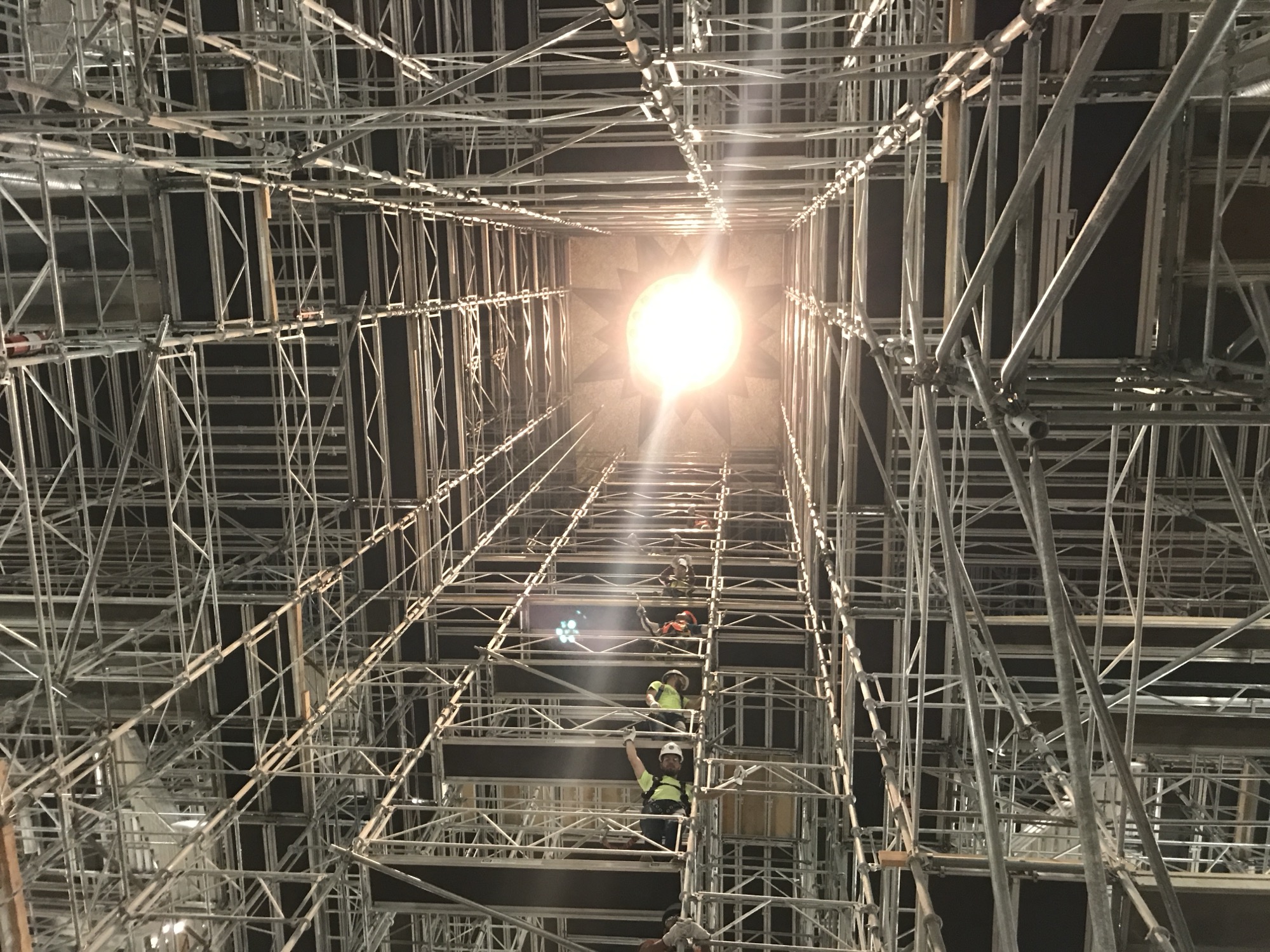Discover Leading Scaffolding Near Me for Your Home or Business Needs
Discover Leading Scaffolding Near Me for Your Home or Business Needs
Blog Article
Checking Out the Various Kinds Of Scaffolding Utilized in Building Tasks
The construction sector counts heavily on numerous sorts of scaffolding to fulfill specific task requirements, each offering distinctive advantages and applications. Traditional frame scaffolding provides a tough structure for general jobs, while put on hold scaffolding is necessary for job on high-rise structures. Other options, such as system and rolling scaffolding, provide to performance and mobility, respectively. Additionally, the cantilever alternative shows indispensable in metropolitan atmospheres where room is constrained. Comprehending the nuances of these scaffolding kinds is essential for enhancing safety and performance on construction websites, prompting a better evaluation of their unique qualities and applications.

Standard Structure Scaffolding
Typical frame scaffolding is just one of one of the most extensively utilized techniques in the building market due to its toughness and convenience. This system contains upright and straight frames that are set up to produce a stable platform for materials and workers. The primary parts consist of upright messages, straight ledgers, and diagonal dental braces, which together give a solid framework that can support substantial lots.
Among the vital advantages of typical structure scaffolding is its flexibility to different building tasks, varying from residential structures to big commercial structures. The modular style enables for simple setting up and disassembly, making it reliable for both temporary and long-term tasks. Additionally, the system can be customized in elevation and width, suiting various building layouts and website problems.
Security is extremely important in scaffolding applications, and typical framework systems are furnished with guardrails and toe boards to stop drops and make certain worker defense. Regular assessments and adherence to safety guidelines are vital in keeping the integrity of the scaffold (Scaffolding). On the whole, standard frame scaffolding stays a fundamental selection in the building and construction market, offering a trusted platform for labor and enhancing general job efficiency

Suspended Scaffolding
Suspended scaffolding offers a special solution for construction projects that need accessibility to elevated surfaces, particularly in circumstances where traditional structure scaffolding might be unwise. This kind of scaffolding is normally put on hold from the roofing system or upper levels of a structure, utilizing a system of ropes, sheaves, and platforms to create a working room that can be gotten used to numerous heights.
One of the key advantages of suspended scaffolding is its flexibility. It can be quickly repositioned or decreased to accommodate adjustments in building and construction requirements, making it suitable for tasks such as window installment, frontage job, and upkeep on skyscraper structures. Additionally, the marginal impact of put on hold scaffolding permits better use ground room in metropolitan environments, where area is frequently limited.
Safety and security is an essential consideration in the usage of put on hold scaffolding. Overall, suspended scaffolding provides a effective and efficient remedy for accessing hard-to-reach locations in various building and construction situations, improving both productivity and security on site.
System Scaffolding
System scaffolding, frequently considered a modern remedy in the scaffolding market, contains pre-engineered parts that can be swiftly set up and adjusted for numerous building and construction projects. Scaffolding. This kind of scaffolding is defined by its modular layout, which enables flexibility and performance on task websites, fitting architectural demands and different elevations
Typically made from high-strength steel or light weight aluminum, system scaffolding supplies enhanced toughness and security. The elements include vertical articles, straight ledgers, and angled braces, which adjoin safely, guaranteeing a durable framework. The style frequently integrates standard fittings, streamlining assembly and disassembly processes, thus decreasing labor time and costs.

Rolling Scaffolding
Moving scaffolding is a versatile option to typical fixed scaffolding, designed for flexibility and ease of usage on construction sites. This kind of scaffolding includes a platform sustained by structures with wheels, enabling workers to easily move it as needed. The wheelchair function dramatically boosts efficiency, as it decreases downtime connected with disassembling and assembling fixed scaffolding.
Typically built from lightweight products such as light weight aluminum or steel, rolling scaffolding offers a tough yet portable service for jobs calling for regular repositioning - Scaffolding. It is particularly advantageous in tasks such as paint, drywall installment, and electric job, where accessibility to various elevations and areas is necessary
Security is extremely important in rolling scaffolding layout, with features such as locking wheels to avoid unintentional motion when in operation, and guardrails to secure workers from drops. In addition, numerous models are adjustable go right here in height, suiting numerous project demands.
Cantilever Scaffolding

The style of cantilever scaffolding commonly entails utilizing arms or brackets secured to a building or framework, making it possible for the scaffolding greenhouse system to prolong outward safely. Safety is extremely important; therefore, these scaffolds need to be crafted to hold up against ecological problems and different lots. Regular inspection and maintenance are necessary to guarantee structural integrity and worker security.
Cantilever scaffolding is preferred for its adaptability and effective use area, making it a popular choice in urban environments where space restraints prevail. In addition, it promotes much easier accessibility to high elevations, inevitably contributing to the overall efficiency of construction tasks. Similar to all scaffolding types, appropriate training and adherence to safety and security requirements are vital for workers utilizing cantilever scaffolding.
Verdict
Conventional structure scaffolding provides security, while suspended scaffolding supplies convenience for raised tasks. System scaffolding assists in quick assembly, and rolling scaffolding improves flexibility for varying job atmospheres.
Traditional framework scaffolding provides a tough structure for basic tasks, while suspended scaffolding is necessary for work on skyscraper frameworks.Moving scaffolding is a flexible alternative to standard fixed scaffolding, developed for flexibility and ease of use on building sites. As with all scaffolding types, appropriate training and adherence to safety standards are critical for workers making try this website use of cantilever scaffolding.
Standard structure scaffolding supplies stability, while suspended scaffolding uses adaptability for elevated tasks. System scaffolding assists in quick assembly, and rolling scaffolding boosts movement for varying job settings.
Report this page